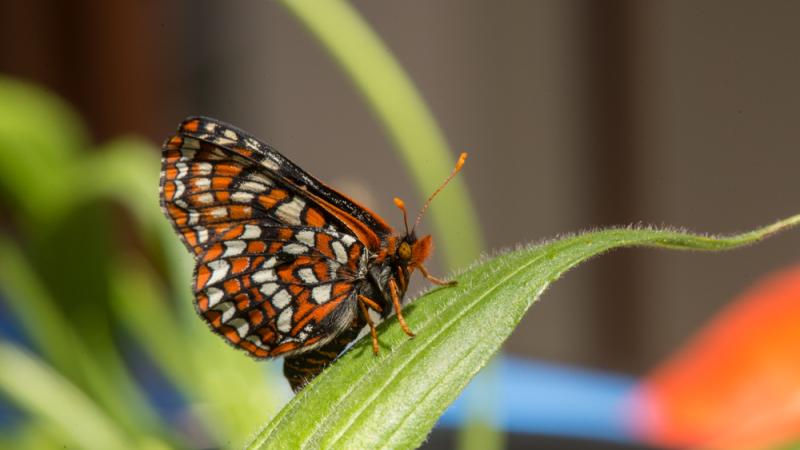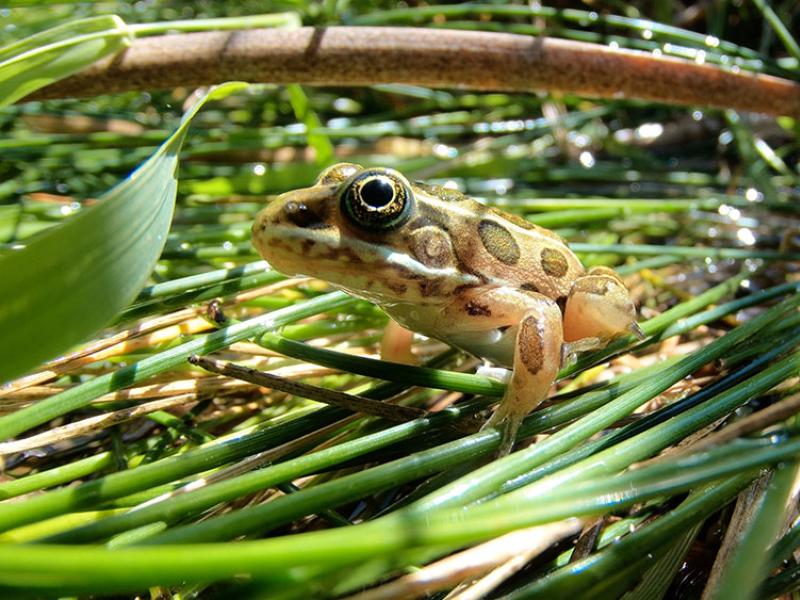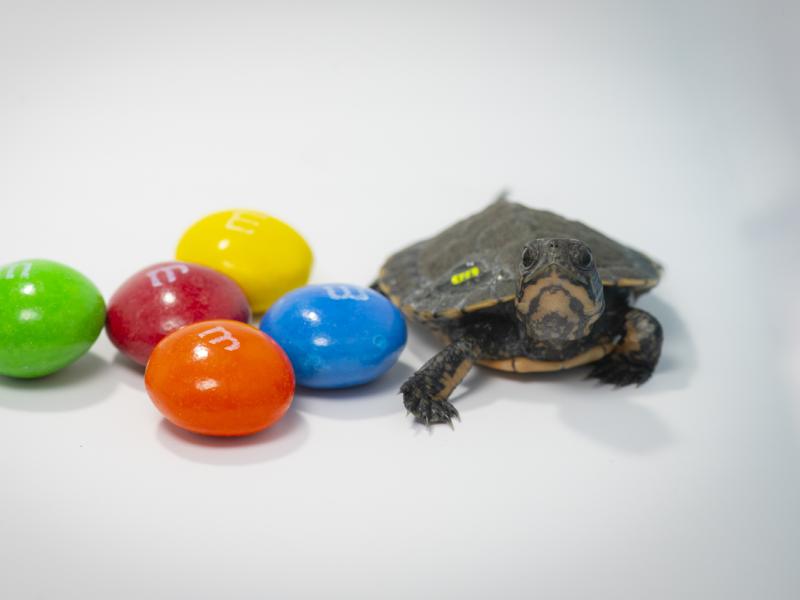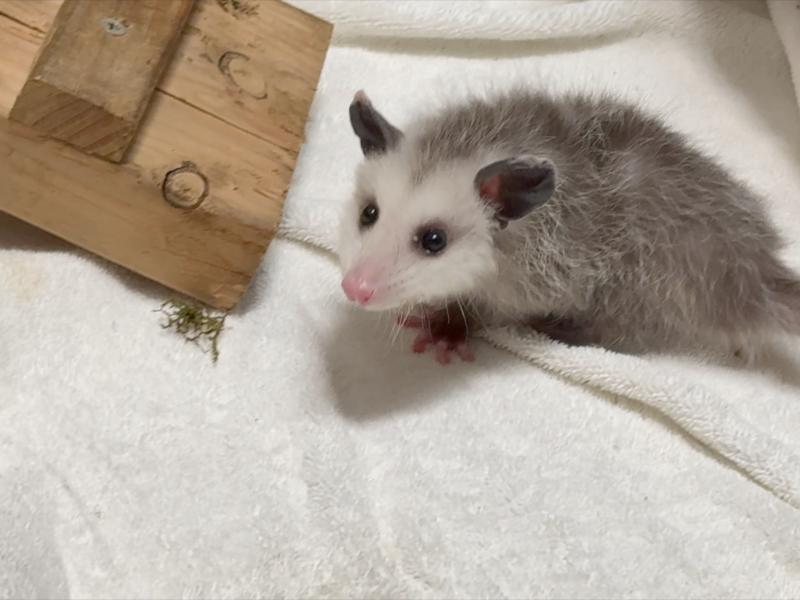With inmates' help, rare NW butterfly is homeward bound

Innovative program helps return endangered butterfly to the wild in Oregon
For nearly 750 endangered butterflies raised at the Coffee Creek Correctional Facility, it's time to head home.
For much of the past year, inmates at Coffee Creek have raised and cared for Taylor's checkerspot butterfly larvae as part of a collaboration with the Oregon Zoo, U.S. Fish and Wildlife Service and the Institute for Applied Ecology. This population of rare butterflies was raised specifically for release in Oregon, from eggs that hatched in the region.
Last week, the butterfly technicians at Coffee Creek transferred 723 of the growing caterpillars and 399 pupae back to the Oregon Zoo's butterfly lab, where they were exposed to cooler, more ambient temperatures to prepare them for release. From there, the insects were transported to conservation biologists at USFWS for release on western Oregon prairies near Corvallis. It's the third-ever release of Taylor's checkerspots in Oregon, where only two known populations of this rare Northwest butterfly remain.
"Having a captive rearing and release program in Oregon is vital for the recovery of Taylor's checkerspots," said Oregon Zoo butterfly conservationist Ronda Naseth, who advises the program at Coffee Creek. "Bringing butterfly conservation work into a medium-security housing unit continues to be a rewarding process."
Coffee Creek's butterfly conservation lab launched in May 2017, with funding from USFWS and the help of an Oregon Zoo Foundation grant. Zoo staff taught inmates how to care for butterfly eggs and raise larvae, supporting their efforts along the way. In 2018, inmates also learned how to care for the adult female butterflies that lay the thousands of eggs needed for the program's success. In 2020, pupae care was added.
"Inmates who have the opportunity to participate in this species recovery program are eager to share what they've learned with their loved ones," said Naseth. "That has the wonderful ripple effect of more and more people in our communities caring about the future of these butterflies."
Rearing the rare butterflies comes with many challenges. One of the most difficult tasks is feeding the ever-munching larvae, which require vast quantities of specific plants. The Institute for Applied Ecology assists the lab in supplying, propagating and harvesting plantago plants for this purpose. The level of care is crucial: The species is listed under the U.S. Endangered Species Act and, according to Xerces Society for Invertebrate Conservation, is in imminent danger of extinction.
In addition to rearing the Taylor's checkerspots, inmates care for and harvest the 2,200 plantago plants that feed the larvae. Many of these plantago crew members have worked in the butterfly lab as well, sharing their knowledge about the larvae's nutritional needs with their fellow crew members.
"We have all learned so much since the program began, " Naseth said. "The butterfly team is thrilled to have partners who are working so diligently at providing the lab with beautiful harvests, and we are exceptionally proud of the quality of larvae being released this year. "
The Coffee Creek-reared caterpillars will complete their development in the wild, first turning into chrysalides and then — over a span of warm, sunny days this spring — emerging as adult butterflies and unfurling for the first time their distinctive, colorful wings.
Though once abundant across the inland prairies of the Pacific Northwest, the Taylor's checkerspot has now lost 99 percent of its grassland habitat to successional plant growth, agriculture and urban development. And while the butterflies themselves are small, the restoration of their high-quality native prairie habitat also benefits a multitude of other species associated with this ecosystem.
The Oregon Zoo has provided more than 28,000 checkerspots for release since joining the recovery effort in 2004 — including a record-setting 5,398 larvae transferred to the Washington Department of Fish and Wildlife last month for release in the south Puget Sound area, where some of the region's best prairie habitat remains.
Committed to butterfly conservation, the Oregon Zoo is a charter member of the Association of Zoos and Aquariums' Butterfly Conservation Initiative, a collaborative effort among nearly 50 zoos and aquariums. To rear checkerspots and release them into the wild, the zoo works in partnership with and receives funding from the Washington Department of Fish and Wildlife and Joint Base Lewis-McChord. Additional project partners include the U.S. Fish and Wildlife Service, the Sustainability in Prisons Project which is a partnership founded by The Evergreen State College and Washington State Department of Corrections, Mission Creek Corrections Center for Women, Larch Corrections Center, the Institute for Applied Ecology, Coffee Creek Correctional Facility and the Xerces Society.
To learn more about the Oregon Zoo's effort to save Taylor's checkerspots and other imperiled Northwest species, visit oregonzoo.org/recovery.
More News

A leap forward: Endangered frogs hit survival milestone
For the first time, zoo-reared northern leopard frogs survived a winter in the wild at the Columbia National Wildlife Refuge.June 12, 2025

Tiny Endangered Turtle Hatchlings Arrive At Zoo
Seventeen northwestern pond turtle hatchlings, each about the size of a walnut, are making themshellves at home at the Oregon Zoo this summer.June 4, 2025

Awesome opossum! Orphaned baby finds new home at zoo
A tiny opossum found wandering earlier this month has made his way to a new home at the Oregon Zoo.May 28, 2025

